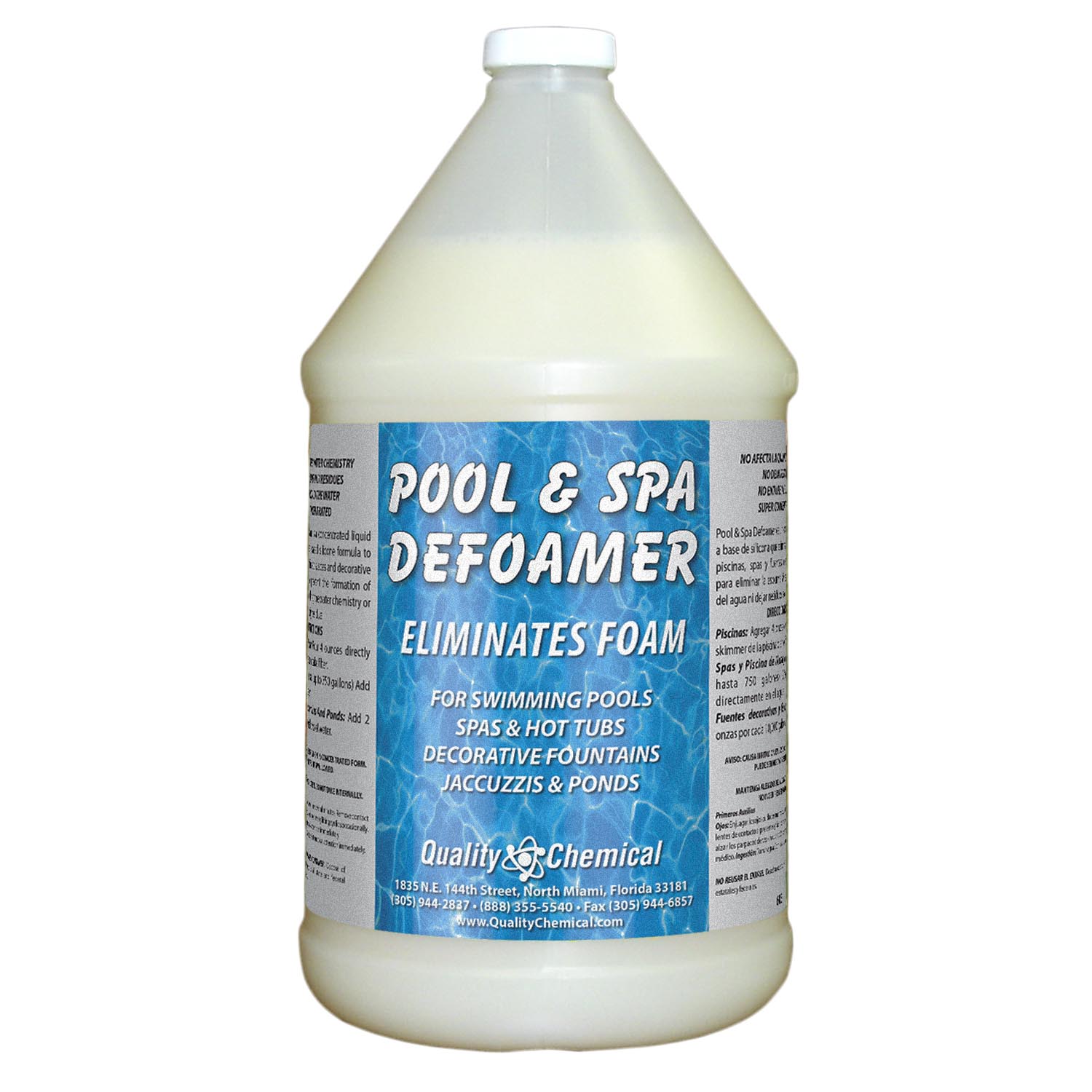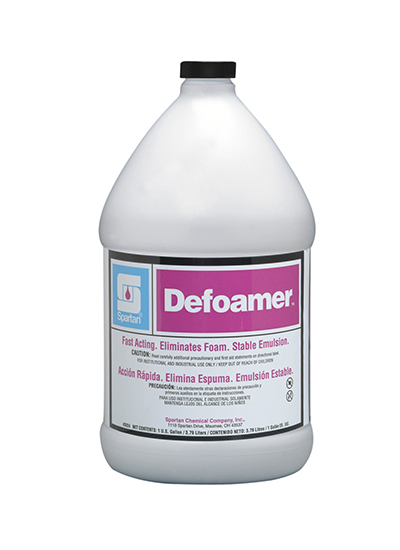The Notable Differences Between Chemical Defoamer and Other Foam Control Agents
The Notable Differences Between Chemical Defoamer and Other Foam Control Agents
Blog Article
Exactly How a Chemical Defoamer Can Improve Efficiency in Your Operations and Processes
In today's affordable industrial landscape, functional efficiency is paramount, and the function of a chemical defoamer can not be overlooked. By dealing with foam-related challenges that interrupt processes, defoamers not just facilitate smoother operations but additionally add to set you back savings and improved product top quality. Their effect spans various sectors, making them a critical factor to consider for those looking to enhance efficiency. Nevertheless, comprehending the particular benefits and applications of defoamers elevates important questions concerning their choice and implementation. What aspects should you consider to maximize their performance in your operations?
Understanding Chemical Defoamers
Chemical defoamers play a vital duty in numerous industrial processes by efficiently preventing and minimizing foam formation. Foaming can bring about operational inadequacies, boosted production expenses, and compromised item high quality. Defoamers are specialized chemical ingredients created to interrupt the security of foam bubbles, thus allowing smoother processing and enhanced performance throughout several sectors, consisting of food and drink, pharmaceuticals, and wastewater treatment.

These agents typically consist of surfactants, oils, or polymeric compounds that lower the surface area tension of the liquid, assisting in the collapse of foam. The system by which defoamers operate commonly involves the destabilization of foam structures, enabling for quicker drainage of fluid and the release of entraped air. Various formulas are customized to particular applications, taking into account elements such as compatibility with the system, temperature, and the nature of the liquid being treated.
Recognizing the make-up and functionality of chemical defoamers is necessary for selecting the appropriate item for an offered application. By optimizing defoamer choice based on procedure needs, sectors can improve operational performance, minimize foam-related obstacles, and ultimately improve overall performance.
Advantages of Utilizing Defoamers
Using defoamers can significantly enhance functional performance across numerous markets by effectively minimizing foam-related issues. The visibility of foam can disrupt processes, causing raised downtime, minimized performance, and prospective top quality degradation in final product. Defoamers assist deal with these challenges by breaking down foam frameworks, therefore permitting smoother operations.
One of the key benefits of utilizing defoamers is the reduction of waste and rework. By minimizing foam formation, defoamers improve the consistency of procedures, ensuring that products are used efficiently. This not only decreases functional expenses but likewise adds to sustainability initiatives by reducing resource usage.
Additionally, defoamers can enhance product top quality. In manufacturing setups, too much foam can bring about incongruities in product attributes, impacting consumer contentment. By controlling foam degrees, defoamers assist maintain the preferred physical properties of items.

Applications in Numerous Industries
The efficiency of defoamers extends across a wide variety of markets, where their application addresses specific foam-related challenges inherent to each field. In the food and beverage industry, defoamers are essential for optimizing production processes, such as developing and milk handling, where extreme foam can impede circulation prices and reduce performance. By minimizing foam, these representatives enhance product quality and consistency.
In the chemical production field, defoamers are utilized in processes like paint manufacturing and wastewater treatment. Below, they protect against foam development that can disrupt mixing and separate stages, consequently enhancing the general performance and effectiveness of procedures.
In pharmaceuticals, defoamers play an essential role in the solution of liquid medicines, making sure appropriate dose and stability by regulating foam throughout mixing and storage. (Chemical Defoamer)
In addition, in the agricultural sector, defoamers are more tips here made use of in pesticide solutions to boost application effectiveness and lessen waste.
Picking the Right Defoamer
Selecting the proper defoamer is vital for attaining ideal efficiency in numerous applications. The choice process need to start with a complete understanding of the certain problems handy, including the type of foam present, the handling problems, and the chemical compatibility with other formula parts.
Defoamers are created from a selection of products, including silicone, mineral oils, and fats. Recognizing the ideal make-up is crucial, as various materials exhibit differing efficiency in varied atmospheres. Silicone-based defoamers are commonly favored in high-temperature applications due to their stability, while organic defoamers might be a lot more suitable for water-based systems.
Furthermore, take into consideration the defoamer's effect on the end product. Some formulas can change the functional or aesthetic residential or commercial properties, making it essential to pick a defoamer that meets product specifications without jeopardizing top quality.
Testing is an additional essential action in picking a defoamer. Small-scale tests can supply useful understandings into the defoamer's efficiency, enabling changes prior to full-blown execution. By carefully evaluating these factors, services can improve effectiveness and make certain that the defoamer efficiently fulfills their functional requirements.
Ideal Practices for Application
Applying a defoamer properly needs cautious preparation and adherence to best methods to maximize its effectiveness. Carry out a thorough evaluation of the specific application and foam qualities. Recognizing the type and source of foam will certainly assist the option of the most ideal defoamer formulation.
Next, develop the optimum dosage (Chemical Defoamer). visit Begin with a small test to identify the minimal reliable focus, as too much use can bring about negative effects on product quality or operational efficiency
Surveillance and changing the application technique is vital; make sure that the defoamer is presented at the appropriate point at the same time for optimal influence, such as throughout mixing or immediately after foam development.

In addition, maintain clear communication with all appropriate personnel to ensure regular application techniques and to share insights on efficiency outcomes.
Final Thought
In verdict, the use of chemical defoamers plays a critical function in improving functional efficiency across diverse industries. By effectively destabilizing foam, these representatives promote quicker water drainage and air release, consequently reducing interruptions and decreasing prices. The tactical application of defoamers not just improves throughput yet likewise guarantees consistent product quality and source optimization. Eventually, the unification of defoamers into commercial processes promotes integrity and adds to overall performance enhancement.

In the food and drink sector, defoamers are important for maximizing manufacturing procedures, such as developing and dairy handling, where extreme foam can hinder flow rates and decrease efficiency. Silicone-based defoamers are commonly preferred in high-temperature applications due to their stability, while organic defoamers might be a lot more suitable for water-based systems.
Report this page